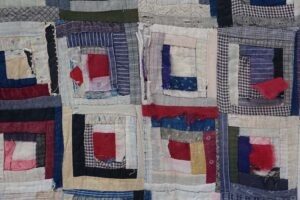by Philip Fry
I was spurred to begin this column by the October 2021 report of the Intergovernmental Panel on Climate Change, and a survey indicating that only a small percentage of Canadians knew the meaning of “natural solutions” to the environmental crisis. Because I had been experimenting since the 1980’s with gardening techniques based on the observation of local relict forests and the dynamics of plant succession, I thought I had useful insights to offer. So I jumped in, writing about details found in local woods and fields that could be applied as practical ways of enhancing our natural heritage.
It was a false start for the column. Like an art student trying to create a drawing by working on an interesting detail while forgetting that its placement on the paper was critical for the over-all composition, my descriptions of the “pit-and-mound structure” and “stick planting” fell flat for lack of being situated in the larger picture of our regional landscape. So, I backtracked, briefly reviewing the history and values which continue to frame our understanding of what I called our “patchwork landscape.” I barely touched upon the serious, but emotionally fraught, task of delving into the colonial assumptions and attitudes that still guide our behaviour within our patchwork home. We persist, it seems, to think as owners of the land, rather than its stewards participating in its inevitable transformation.
Adopting measures to mitigate the processes of climate change, and developing techniques of adaptation, are urgent. But the way forward is rife with problems, not only because the reasons behind the crisis are complex and snarled up, but also because we tend to resist questioning our way of life. Many steps we need to consider will challenge deeply felt assumptions about our traditions, our values, and our behaviour. To begin, we will need to sort out the entanglement of the problems we face. One useful way, I suggest, is to think of the structure of our patchwork landscape as an olden days quilt.
Like a quilt, our habitat is three dimensional, built physically of vertical layers of diverse materials, and horizontally distributed parcels of land, all stitched together by a network of threads and subject to the pressures of time. The quilt’s backing is our bedrock, which has its own textures and flow; the batting is our soil, including a thin padding of organic substances; the top is pieced together in a pattern, sometimes regular, as the traditional Log Cabin design illustrated here, or at random, as in a Crazy Quilt.
The top is assembled by stitching small pieces of various cloths – or differentiated parcels of land – into blocks. As can be seen in the illustration, each piece has a particular shape, texture, colour, and resilience (some fray or disintegrate faster than others), and each contributes to the construction of a block. The blocks, in turn, are assembled according to the design. With a quilt, the design governs each block’s placement; in our landscape, the pattern concerns both the block’s location and role – domestic, commercial, institutional.
Three kinds of stitches determine the governance of the landscape quilt: provincial, dominion, or jurisdiction, which binds the quilt’s three layers together; township regulation, which deals with the connections composing and connecting neighbouring blocks and their activities; and stewardship practice, which sees to the optimal functioning of the parcel of land placed in one’s care. Should any of the quilt’s patches fray, or should the stitches be too loose, too tight, or for some reason fail, the whole quilt eventually becomes tattered and in need of repair.
The agenda I am proposing for the new year is to trace weaknesses in our quilt’s stitches and patches, starting with a look at the implications of the measures taken by our current provincial government with regard to environmental protection. There will sometimes be disagreement among us about our beliefs, and the causes of the crisis, which will lead, at times, to emotional turmoil and the depressing temptation of self-doubt. But with care and respect, we can do this.
I would be happy to receive your ideas and comments at wildflowerguy@gmail.com.

